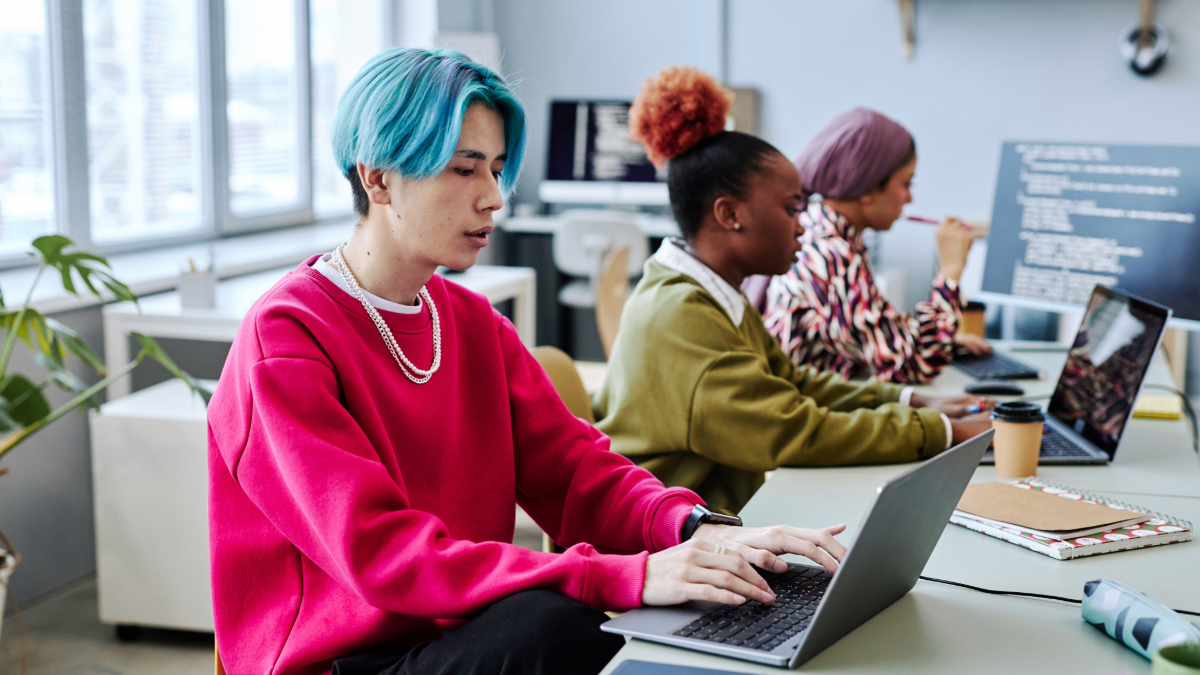We all know that individuals benefit when they continue to learn and grow. But how do organizations learn?
Hint: together.
In 1990, two scholars wrote a widely respected paper on organizational learning and innovation. They proposed that the most adaptive and innovative organizations have team members with a wide variety of skills and experiences. But it’s the quality of the relationships among these colleagues that permits them to turn these ideas into innovation and productivity.
Like so many academic papers, their concept of “absorptive capacity” is abstract. But the essence is not only clear - it’s practical.
The learning power of colleagues – and the organization – grows when the relationships between them are deepened and improved.
Our relationships magnify our individual skills, unlocking a collective power that they don’t have on their own. The deeper the relationships, the more learning capacity and the more resilient the team or the organization.
But this kind of learning presumes that colleagues can access each other’s knowledge and experience. If individuals are siloed and separated - with no mechanisms for sharing and learning together - they can’t build the relationships necessary to successfully respond to new ideas.
By now, you may be thinking, great. Thanks to a global pandemic, the workplace has experienced a seismic shift and “together” isn’t together any more. As we move into a “new normal,” we have some in person, some remote and some in between. So what do we do?
While it’s tough, it’s not impossible. Here are a few ideas to help build the connections that fuel innovation in your teams and organizations - whether in person or remote.
1. Don’t get distracted by the modality.
News sources, blogs and newsletters are riddled with complaints about Zoom fatigue. As a result, organizations are declaring Zoom-free Fridays and encouraging colleagues to turn off their cameras.
But is Zoom really the problem? Or is it the fact that we default to unstructured, aimless meetings rather than being intentional about purposes and desired outcomes?
A quality meeting is one where people are engaged, interested, learning and growing with and from each other - where having participated gets you somewhere you wouldn’t have otherwise gotten.
To build more opportunities for creative connection, focus less on the modality and more on the substance and value of the interaction itself.
2. Mix it up.
Even small organizations get siloed - you work regularly with some people and rarely with others.
But the same old people often have the same old conversations that result in the same old ideas.
When we engage different people, we get new ideas, and increase our awareness that organizations have creative sparks at every level.
Creativity isn’t limited to R&D, marketing or innovation teams. An engineer in a manufacturing company expressed his frustration about the all-too-common assumption that only some roles are creative. A former machinist, he worked nights to become a mechanical engineer, only to feel distanced from his former colleagues. The machinists know the work, the machines, the tolerances and the challenges, but the engineers are the “experts.” By changing this limiting narrative, he explained, the creative problem solving potential of a cross-functional group becomes endless.
Tapping into the depths of individual experience, regardless of the source, is critical to organizational creativity and innovation. To limit our view on who does the learning and creative work in organizations ignores a wealth of potential at every level of the organization.
3. Make it about something else.
When we talk only about work, we narrow our opportunity to get to know each other more deeply.
To learn new things, we need to find a way to have different conversations.
I am not advocating a Zoom cocktail hour. I’m talking about a substantive, structured discussion that allows people to engage with each other around big ideas, to be surprised and enriched by the perspectives and experiences of others.
An example: A manufacturing team (machinists and quality specialists) discussed - with the guidance of a facilitator - Peter Heller’s The Dog Stars, an end-of-the-world novel. The group explored what skills they would each contribute to the group’s survival were they to find themselves stranded on a desert island. In sharing their interests and passions, one participant was surprised by what she learned about a group of people she thought she already knew well. “I found out that we have very, very resourceful people in our group.”
The realization that each individual has a deeper, often unexpected, well of skills permits colleagues to envision new ways to partner and collaborate. This practice in trust and openness (in this case in a story that had nothing to do with work) strengthens relationships that, once formed, present new avenues to solve problems together. “If you want to learn,” explained one team member, “you’re going to be paying more attention to not just your job, but the jobs around your job.”
Cultivating relationships helps colleagues see their jobs as linked to a larger objective – to the mission and purpose of the organization. In turn, these avenues create deeper openness to learning, individually and together.
American poet Wallace Stevens once wrote, “In the sum of the parts, there are only the parts.” But workplace relationships are multiplicative - in the product of those same parts lies learning, creativity and innovation.

.png)






